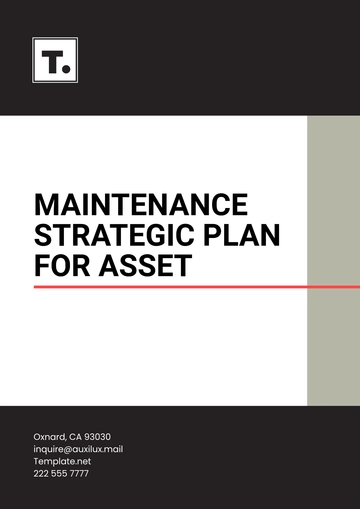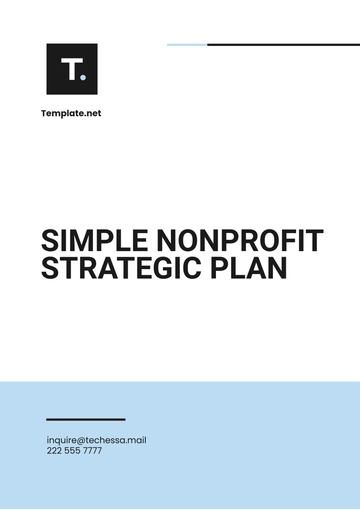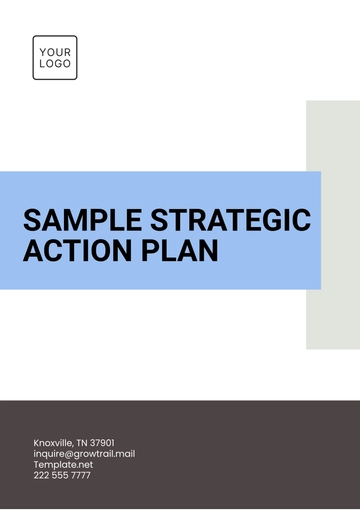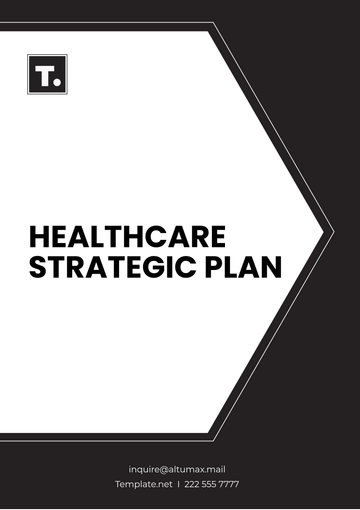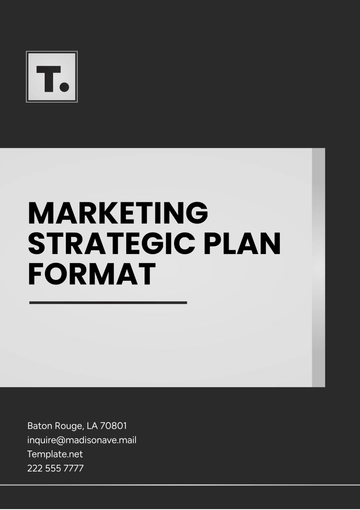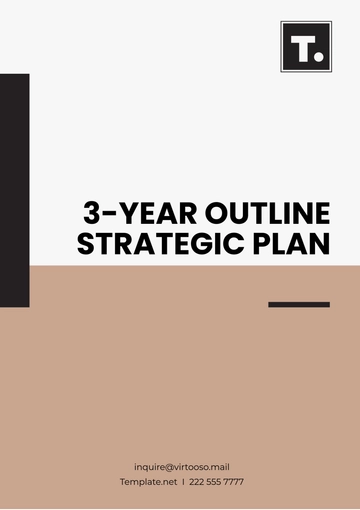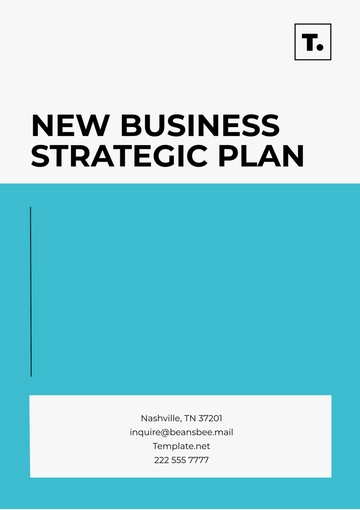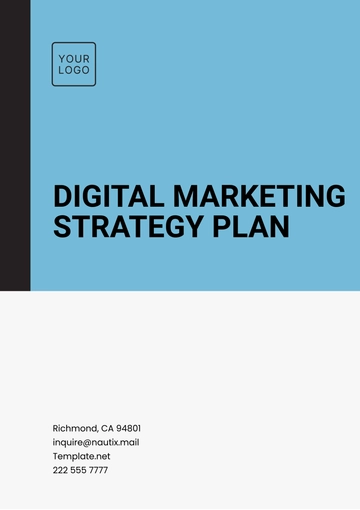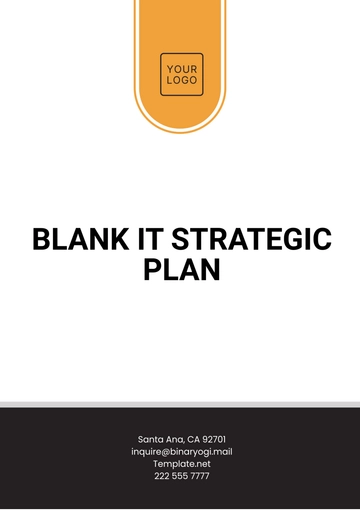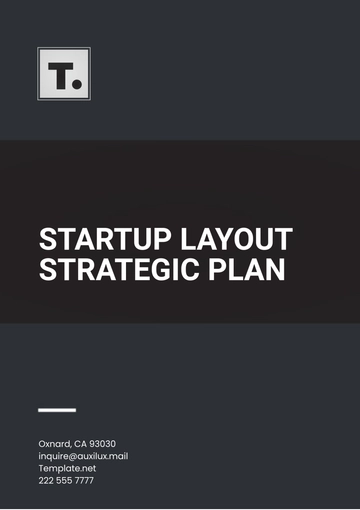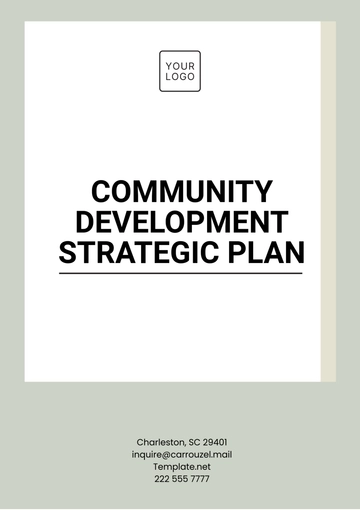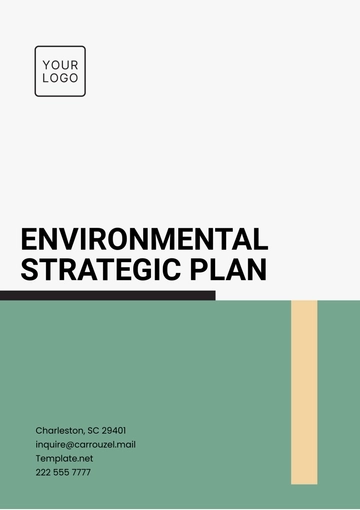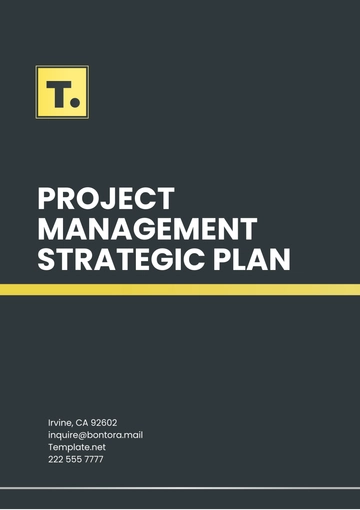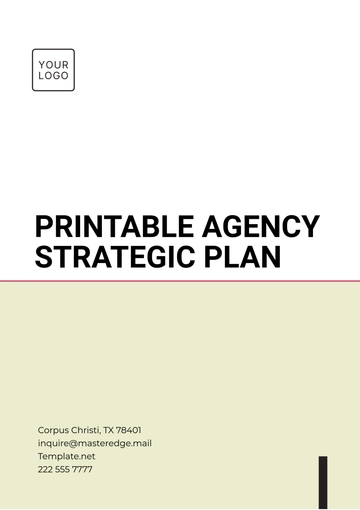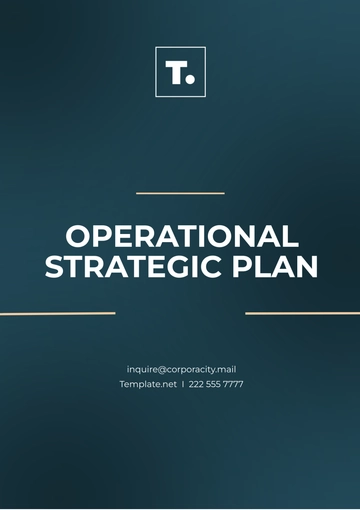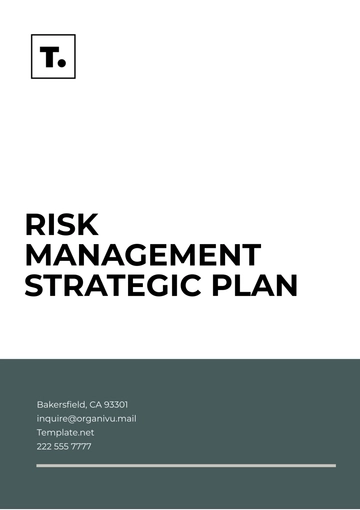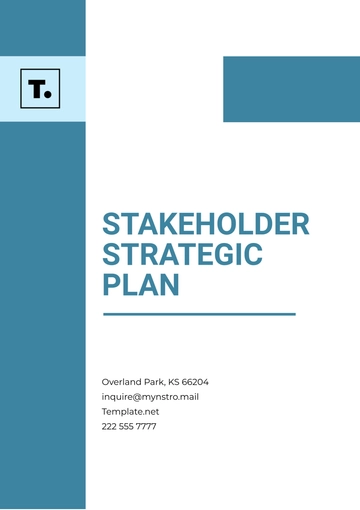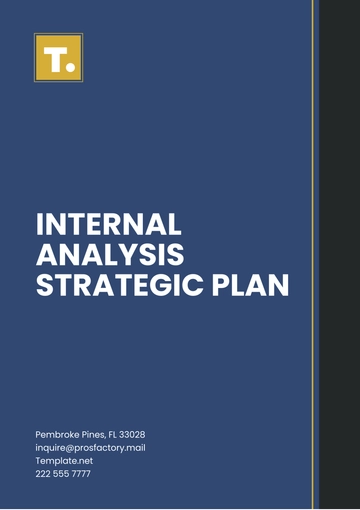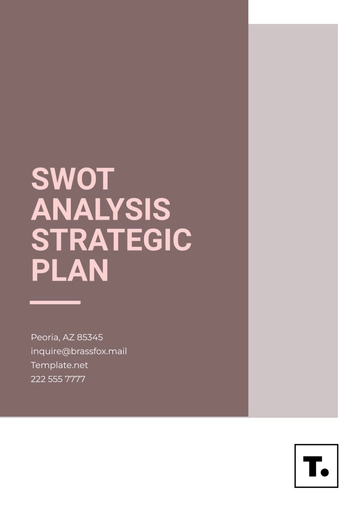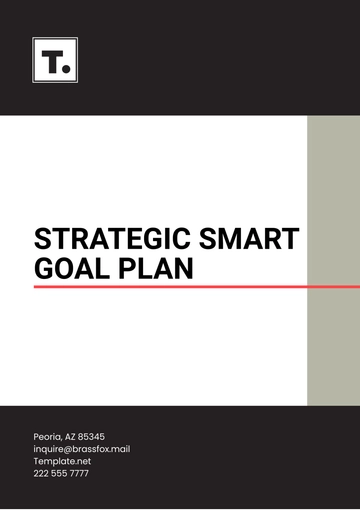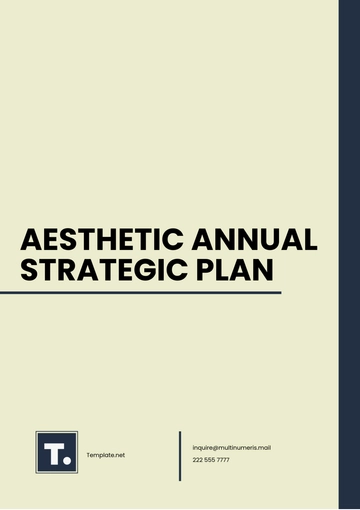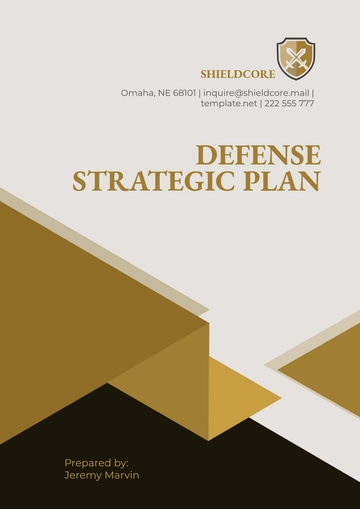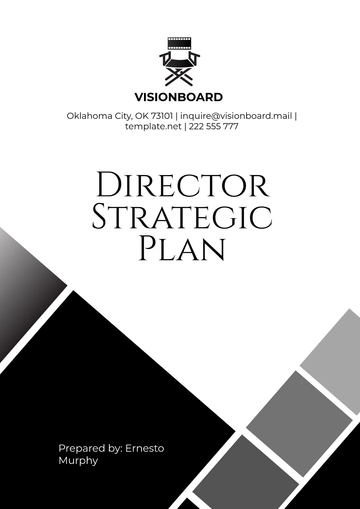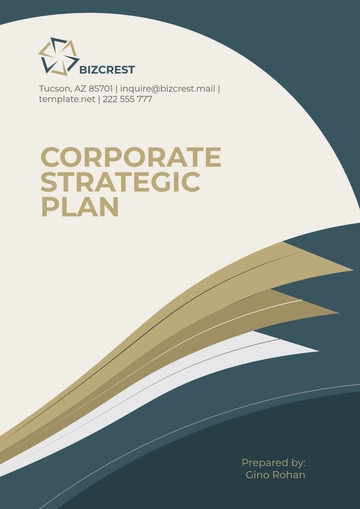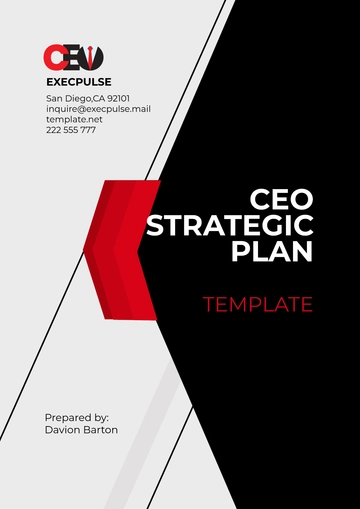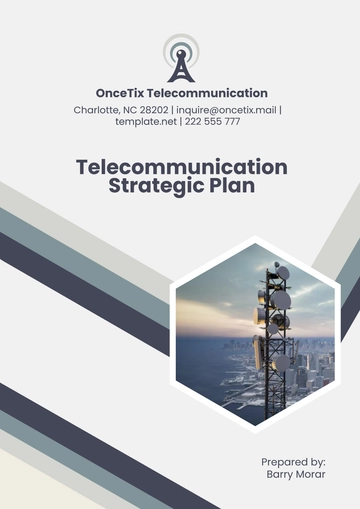Free Cleaning Services HR Strategic Plan

1. Executive Summary
This strategic plan is designed to guide the Human Resources (HR) activities at [Your Company Name], a leader in the cleaning services industry. Our mission is to align HR practices directly with the overarching business objectives, ensuring that we not only meet but exceed our operational goals. In pursuit of excellence, this document outlines a comprehensive framework for recruitment, retention, training, and workforce development that is both ambitious and achievable. We recognize that our employees are the bedrock of our success. As such, this plan serves as a blueprint for fostering a skilled, motivated, and committed workforce that will drive [Your Company Name] towards achieving its business goals. Key strategies and action plans detailed herein are crafted to support our vision of becoming the premier provider of domestic, commercial, and industrial cleaning services, renowned for our consistency, trustworthiness, and high-quality service delivery.
2. Company Overview
[Your Company Name], located at [Your Company Address], and reachable via [Your Company Contact Information], has established itself as a formidable player in the cleaning services sector. Offering a wide range of services tailored to meet the needs of domestic, commercial, and industrial clients, our commitment to quality has set us apart in a competitive market. The foundation of our reputation rests on our unwavering dedication to customer satisfaction, which we achieve through meticulous attention to detail, a robust work ethic, and the reliability of our services. In an industry where trust is paramount, [Your Company Name] prides itself on its ability to consistently deliver exceptional cleaning services, thereby fostering long-term relationships with our clients and enhancing our brand's image in the marketplace.
3. Objectives of HR Strategic Plan
The strategic objectives of the HR department at [Your Company Name] are intricately aligned with the company’s broader business goals. Each objective is designed to create a symbiotic relationship between the company’s aspirations and the well-being and development of our workforce. Our objectives are as follows:
Align HR Strategy with Business Objectives: Ensure that every HR initiative, from recruitment to performance management, is designed to support and propel [Your Company Name]'s business goals forward. This alignment is crucial for sustaining growth and achieving operational excellence.
Create a Competent and Well-Trained Workforce: Recognize the importance of investing in our employees' skills and knowledge. By implementing comprehensive training programs and encouraging continuous professional development, we aim to build a workforce that is not only skilled but also adaptable to the changing needs of the industry and our clients.
Develop a Motivating Work Environment: Cultivate an organizational culture that celebrates achievement, fosters innovation, and encourages teamwork. A motivating work environment is essential for enhancing employee productivity and satisfaction. By acknowledging and rewarding the hard work and dedication of our staff, we foster a positive atmosphere that is conducive to high performance.
Implement Effective Recruitment and Retention Strategies: Develop and execute recruitment strategies that attract talented individuals who share our commitment to excellence. Equally important is our focus on retention; by creating clear career pathways, offering competitive benefits, and ensuring a supportive work environment, we aim to retain our best talent, reducing turnover and building a stable, experienced team.
Optimize HR Processes and Operations: Continuously seek improvements in our HR processes and operations to achieve efficiency and effectiveness. This involves leveraging technology, streamlining workflows, and implementing best practices in HR management. By doing so, we not only enhance the operational efficiency of our HR department but also provide better support to our employees and management team.
Achieving these objectives requires a focused and strategic approach to HR management. The following sections of this strategic plan will delve deeper into the specific strategies and action plans designed to realize these goals, setting [Your Company Name] on a path to sustained success and industry leadership.
4. HR SWOT Analysis
In order to effectively navigate the challenges and opportunities that lie ahead for [Your Company Name], a thorough SWOT (Strengths, Weaknesses, Opportunities, Threats) analysis of our Human Resources (HR) operations is essential. This analysis serves as a critical tool in our strategic planning process, enabling us to gain a comprehensive understanding of our internal capabilities and limitations, as well as the external factors that could impact our ability to achieve our HR objectives. The following table presents a detailed examination of the strengths that position us advantageously in the market, the weaknesses we must address to improve our operational efficiency, the opportunities available for growth and development, and the threats we must mitigate to protect our workforce and sustain our competitive edge. By carefully analyzing these elements, [Your Company Name] can craft targeted strategies that leverage our strengths, convert weaknesses into opportunities for improvement, capitalize on industry trends and advancements, and guard against potential risks. This SWOT analysis is not only a snapshot of our current HR landscape but also a roadmap guiding us towards a future where our HR practices are fully aligned with and actively contributing to the realization of [Your Company Name]'s business goals.
Strengths | Weaknesses | Opportunities | Threats |
|---|---|---|---|
Experienced and dedicated workforce | High employee turnover | Tapping into untapped markets | Intense competition for skilled workforce |
Effective HR policies | Lack of formal training programs | Technological advancements for HR functions | Changing labor laws |
To address the elements identified in the SWOT analysis, [Your Company Name] will undertake several strategic initiatives. These include the development and implementation of a comprehensive training and development program aimed at enhancing employee skills and engagement, thus addressing our current weakness and turning it into a strength. Additionally, we will explore innovative recruitment strategies that emphasize diversity and inclusivity, ensuring we attract and retain top talent in a competitive market. By investing in technology that streamlines HR processes and improves operational efficiency, we can better support our workforce and enhance productivity. Finally, we will stay vigilant and responsive to changes in labor laws, ensuring compliance and minimizing risk. Through these targeted strategies, [Your Company Name] is committed to building a resilient, dynamic, and highly skilled workforce that is capable of driving the company's success in the cleaning services industry.
5. HR Strategies & Goals
The Human Resources (HR) department at [Your Company Name] is committed to fostering a workplace environment that is dynamic, inclusive, and conducive to personal and professional growth. To achieve this, our HR strategy is anchored in five key pillars, each designed to support our business objectives and drive our company towards achieving excellence in the cleaning services industry.
Recruitment
Goal: To establish [Your Company Name] as a premier employer, attracting a diverse pool of talented individuals who are committed to excellence.
Strategy: Leverage a multifaceted recruitment approach, utilizing both digital platforms and community outreach, to tap into a wide talent pool. Prioritize diversity and inclusivity in our recruitment processes to foster a workforce that reflects the communities we serve.
Training and Development
Goal: Ensure all employees possess the knowledge and skills necessary to perform their roles effectively and safely, while also providing opportunities for career advancement.
Strategy: Develop a comprehensive training program that includes onboarding, continuous skill development, and leadership training for potential managerial candidates. Utilize a combination of in-house training sessions, online courses, and partnerships with educational institutions.
Reward and Recognition
Goal: To cultivate a culture of appreciation where outstanding performance and dedication are consistently recognized and rewarded.
Strategy: Implement a transparent and fair rewards system that includes both monetary and non-monetary incentives. Regularly celebrate achievements through company-wide recognitions, performance bonuses, and personalized rewards.
Employee Retention
Goal: Maintain a high retention rate by ensuring [Your Company Name] is a great place to work for all employees.
Strategy: Foster an engaging work environment that offers competitive salaries, benefits, and work-life balance. Conduct regular employee satisfaction surveys to identify areas for improvement and implement changes based on feedback.
Performance Management
Goal: Enhance organizational effectiveness by promoting high performance and aligning individual objectives with company goals.
Strategy: Establish a clear performance management framework that includes setting measurable goals, providing regular feedback, and conducting annual performance reviews. This framework will support employee growth and ensure accountability.
6. HR Action Plan
To bring our HR strategies to life, [Your Company Name] has developed a detailed action plan. This plan outlines the steps required to implement our strategies, the expected outcomes, and identifies the key personnel responsible for each action.
Timeline and Implementation
Quarter | Description |
|---|---|
Q1-Q2 | Focus on enhancing our recruitment strategy to build a diverse and talented workforce. Launch new training and development programs. |
Q3 | Introduce the new reward and recognition system. Evaluate and adjust the employee retention strategies based on initial feedback. |
Q4 | Fully implement the performance management system. Review the effectiveness of all HR strategies and make necessary adjustments. |
Expected Outcomes
Increased diversity within the workforce.
Improved employee satisfaction and engagement.
Enhanced employee performance and productivity.
Reduced turnover rates.
Responsibility
HR Manager: Oversee the implementation of all HR strategies and action plans.
Recruitment Team: Execute the recruitment strategy, focusing on diversity and inclusivity.
Training Coordinator: Develop and implement training programs.
HR Analyst: Monitor and report on the effectiveness of HR strategies.
7. Recruitment Strategy
At [Your Company Name], we understand that our success hinges on our ability to attract, select, and recruit the best talent. Our recruitment strategy is designed to not only fill current vacancies but also to build a talent pipeline for future needs, ensuring that our workforce is diverse, skilled, and aligned with our company values.
Multi-Channel Recruitment Approach
Strategy: Utilize a variety of recruitment channels including online job boards, social media platforms, career fairs, and university partnerships to reach a broad audience. Emphasize our commitment to diversity and inclusion in all job postings and recruitment materials.
Candidate Experience
Goal: Provide a seamless and positive experience for all candidates, from application to hire.
Strategy: Streamline the application process, ensure timely communication, and provide constructive feedback to unsuccessful candidates. Foster an environment where all applicants feel valued and respected.
Onboarding and Integration
Goal: Ensure new hires feel welcomed, valued, and prepared to contribute to our company from day one.
Strategy: Develop a structured onboarding program that includes comprehensive training on company policies, job responsibilities, and safety protocols. Pair new hires with seasoned mentors to facilitate their integration into the team.
By focusing on these key areas—recruitment, training and development, reward and recognition, employee retention, and performance management—[Your Company Name] is poised to build a strong, competitive, and motivated workforce. This workforce will not only meet the current needs of our company but will also be adaptable and responsive to future challenges and opportunities in the cleaning services industry.
8. Training and Development
At [Your Company Name], we believe in empowering our employees with the knowledge and skills they need to excel in their roles and contribute to our success. To achieve this, we are committed to implementing comprehensive training programs that address both the immediate and long-term needs of our workforce and the company.
Customized Training Programs
Strategy: Design and implement role-specific training modules that cater to the unique requirements of different positions within the company. This includes technical skills for cleaning and maintenance, customer service excellence for front-line employees, and leadership skills for managerial staff.
Continuous Professional Development: Encourage and support employees in pursuing ongoing professional development opportunities. This could include attending workshops, conferences, and pursuing certifications relevant to their roles and the industry.
Measurable Outcomes: Establish clear metrics to assess the effectiveness of training programs, such as improved job performance, increased customer satisfaction scores, and enhanced efficiency in service delivery.
9. Performance Management
Effective performance management is crucial to driving organizational success and fostering employee growth at [Your Company Name]. Our goal is to create a culture of accountability, where employees understand their objectives and how they contribute to the company's mission.
Annual Performance Review System
Implementation: Develop a structured performance review system that evaluates employees annually against predefined targets and objectives. This system will incorporate both quantitative and qualitative assessments to provide a holistic view of employee performance.
Recognition and Improvement: High-performing employees will be identified for rewards and recognition, while those needing improvement will receive constructive feedback and tailored development plans to address gaps in performance.
Feedback Mechanism: Encourage a two-way feedback culture where employees can share their views on the performance management process, contributing to its continuous improvement and alignment with employee expectations.
10. Monitoring, Evaluation & Review
Continuous monitoring, evaluation, and review are the pillars of a dynamic HR strategy that remains relevant and effective in achieving its goals. At [Your Company Name], we are dedicated to regularly assessing the impact of our HR strategies and making necessary adjustments in response to internal and external changes.
Regular Monitoring and Evaluation
Process: Implement a system for continuous monitoring of HR initiatives, from recruitment and training to performance management. This will involve collecting data on key HR metrics and analyzing this information to identify trends, successes, and areas for improvement.
Stakeholder Feedback: Regularly solicit feedback from employees, managers, and other stakeholders to gauge the effectiveness of HR policies and practices. This feedback will be invaluable in identifying issues and opportunities for enhancement.
Annual HR Strategy Review
Annual Review: Conduct a comprehensive review of the HR strategy and action plan at least once a year. This review will assess the alignment of HR initiatives with the company’s strategic objectives and the evolving needs of the business and its workforce.
Adaptation and Improvement: Based on the outcomes of the review, the HR strategy may be adjusted to address new challenges, capitalize on opportunities, and incorporate best practices and innovations in HR management.
Through these focused efforts in training and development, performance management, and regular monitoring and evaluation, [Your Company Name] aims to cultivate a workforce that is skilled, motivated, and aligned with our corporate goals. This strategic approach to HR management will not only enhance our service delivery and customer satisfaction but also ensure that our company remains a competitive and attractive employer in the cleaning services industry.
- 100% Customizable, free editor
- Access 1 Million+ Templates, photo’s & graphics
- Download or share as a template
- Click and replace photos, graphics, text, backgrounds
- Resize, crop, AI write & more
- Access advanced editor
Chart the Course for Success in Your Cleaning Services Business with Template.net's Editable and Customizable HR Strategic Plan Template. Utilize our AI Editor Tool to tailor strategic initiatives effortlessly, aligning HR practices with business objectives. Streamline planning processes with this comprehensive template, outlining clear goals and actionable steps for HR excellence. Elevate your organization with this essential tool guiding HR strategy and implementation.
